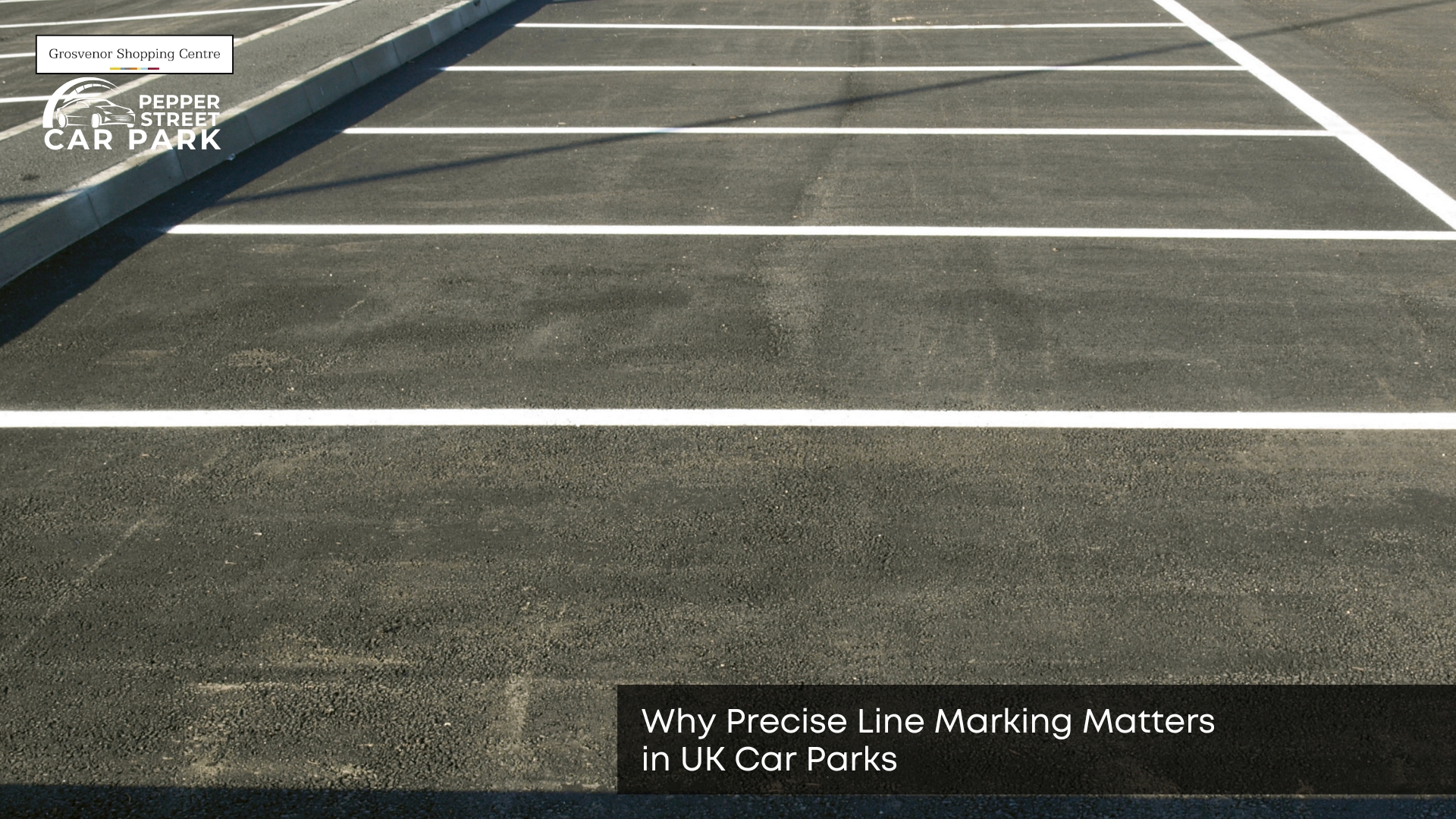Clear and accurate line marking is essential in every well-run car park in the UK. It helps organise vehicles, guide traffic, and reduce the risk of accidents or confusion. From defining parking bays to directing pedestrian paths, those painted lines play a bigger role than most drivers realise. This article examines how effective car park line marking enhances safety, efficiency, and accessibility, while also ensuring your site complies with legal and industry standards.
What Role Do Line Markings Play in a Car Park?
Line markings play a key role in directing vehicles, separating traffic flows, and ensuring orderly parking. They show drivers exactly where to go and where to stop, helping to avoid conflict or congestion. Markings can also highlight pedestrian crossings, disabled bays, or loading zones. Without clear lines, even the best car park can quickly become chaotic. When things are well-marked, everyone benefits from the structure they create.
Why Is Precision So Important in Line Marking?
Precision in line marking is crucial because even minor errors can lead to confusion, wasted space, or unsafe conditions. Crooked or misaligned bays may lead to vehicles parking too close together, while unclear arrows might misdirect drivers. Consistent spacing and sharp edges show professionalism and build driver confidence. Just like road markings, accuracy in car park lines makes every journey smoother. This focus on precision also ties into long-term car park maintenance.
Does Precise Line Marking Help Improve Car Park Safety?
Yes, precise line marking helps improve safety by providing clear, visible boundaries that guide both vehicles and pedestrians. Well-marked walkways protect foot traffic, while directional arrows reduce collisions at corners or exits. Hazard zones can also be outlined to warn drivers of specific risks. The more accurate the layout, the fewer chances there are for accidents. This safety benefit also links closely to accessibility for all users.
How Does It Help Maximise Available Parking Space?
Precise line marking helps maximise available space by ensuring each bay is correctly sized and positioned, thereby reducing wasted areas. A poorly marked car park might lose out on several usable spaces simply due to inefficient layout. Optimised markings allow for more vehicles to park comfortably, increasing capacity without needing more land. This space-saving approach is particularly valuable in urban parking spaces. The efficiency also makes future maintenance easier and more consistent.
Why Does It Matter for Disabled and Reserved Bays?
Precise marking is crucial for disabled and reserved bays because these spaces must meet both legal and practical guidelines to ensure safety and accessibility. The layout, symbols, and spacing must all be correct to support those with mobility needs. Inaccurate markings can make a reserved bay unusable or even result in fines for the site owner. Clear lines also help other drivers respect these designated areas. This leads directly to improving accessibility for all users.
Can Good Line Marking Improve the Look of a Car Park?
Yes, good line marking can enhance the overall appearance of a car park by creating a neat and professional look. Faded or patchy lines make a space seem neglected and uninviting. Fresh, crisp markings suggest that the space is a well managed car park and regularly maintained. It also adds visual order, making the whole area feel safer and easier to navigate. That visual quality often reflects the brand or business behind the car park.
Does It Make Maintenance Easier in the Long Run?
Yes, precise line marking makes long-term maintenance easier because it creates a clear standard to follow during repainting or repairs. When lines are uniform and well-documented, contractors can refresh them without needing to redesign the layout. This saves time and money, especially in large car parks. A well-planned marking system is an integral part of a robust asset management strategy. That same system plays a role in ensuring full accessibility for everyone. This is especially true for any long stay car park that needs to keep bays clear and consistent.
How Does Line Marking Affect Accessibility?
Line marking enhances accessibility by ensuring that disabled bays, drop kerbs, and pedestrian paths are clearly defined and properly spaced. Good markings ensure that people with mobility issues know where to go and can use the car park safely. Text, symbols, and colour contrast also support users with visual impairments. Accessibility is a legal and moral obligation, and clear markings are a vital part of meeting it. Once that’s achieved, it’s also important to consider compliance with other relevant standards.
Are There Rules and Standards for UK Car Park Line Marking?
Yes, there are rules and standards for car park line marking in the UK, including guidance from the Department for Transport, British Standards (such as BS 8300), and local authorities. These cover bay sizes, colour usage, spacing, and markings for special access. Following these standards ensures that the car park is safe, inclusive, and compliant with the law. Keeping up with standards also helps avoid costly penalties and the need to rework a site. This brings us to why these lines are worth the extra effort.
Why Well-Marked Lines Are Always Worth the Effort
Well-marked lines are worth the effort because they enhance safety, boost efficiency, support accessibility, and improve the look of your car park. Whether it’s about meeting legal standards or creating a smooth user experience, precision pays off. Investing in proper markings demonstrates your care for both drivers and your site’s reputation, especially when parking partnerships come into play. When every line serves a purpose, your parking space becomes a safer and smarter area.


Leave a Reply